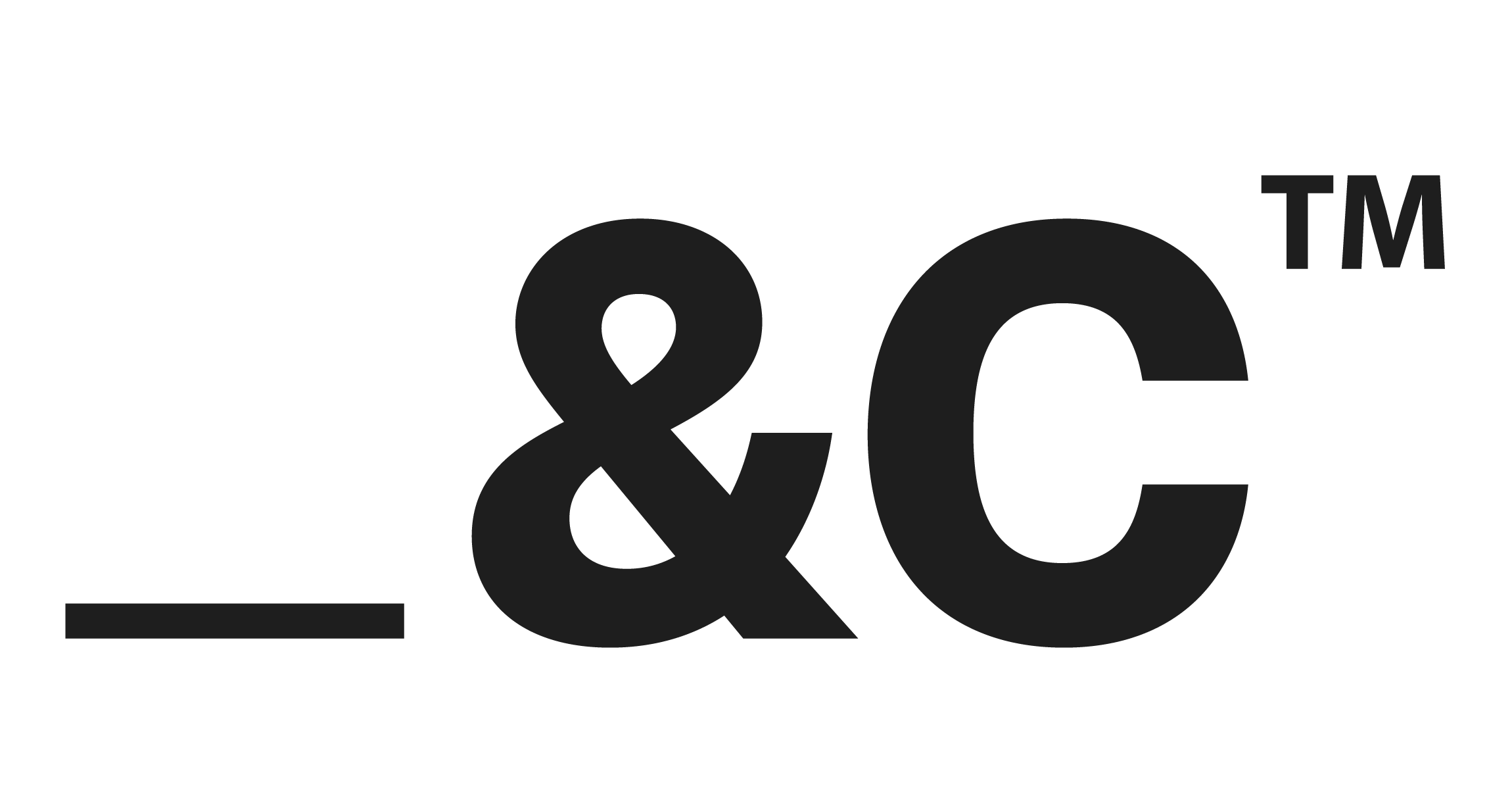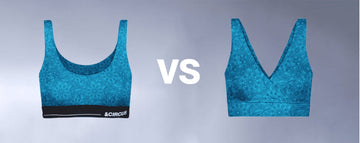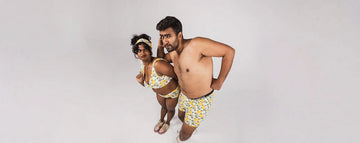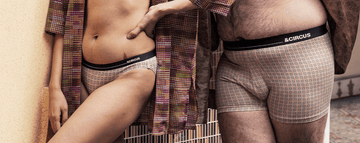It's a crisp morning on a rugged trail in the Pacific Northwest, where mist clings to the pines and the crunch of gravel underfoot keeps time with a hiker's steady breath. They're miles from civilization, carrying only what fits in a minimalist pack. Their secret to staying comfortable? Not the high-tech jacket or the pricey boots, but the soft, barely-there innerwear that moves with them, wicks sweat, and leaves no trace on their skin or the planet. For trail enthusiasts, the right gear isn't just about performance; it's about purpose. As eco-tourism surges and adventurers demand sustainability without sacrificing function, a quiet revolution is unfolding in what they wear closest to their skin.
Uncomfortable underwear shouldn't steal your confidence. At Andcircus, we craft ultra-soft, sustainable Lenzing Modal Micro® innerwear for every body, XS to 5XL. From briefs to bras, our custom packs fit you perfectly. Shop risk-free with our 100% satisfaction guarantee and embrace comfort that includes everyone. #LoveEveryBody. Shop Now!
Trail Enthusiasts Turn to Durable, Eco-Friendly Travel Garments for Performance and Comfort
The rise of hiking, trekking, and eco-conscious travel has sparked a shift in how adventurers dress. According to a March 2025 report from Global Market Insights, the outdoor apparel market is booming, driven by consumers who prioritize durability and environmental responsibility. Brands like AndCircus are at the forefront, crafting micromodal innerwear soft, breathable, and biodegradable for men, women, and even maternity wear. These garments aren't just a base layer; they're a statement that comfort and ethics can coexist, whether you're scaling a mountain or navigating the wilds of parenthood.
Why the focus on innerwear? It's the unsung hero of any trek. A good base layer regulates temperature, manages moisture, and prevents chafing during long hauls. But traditional synthetic options, like nylon or polyester, often come with a heavy environmental cost. Micromodal, derived from sustainably sourced beechwood, offers a compelling alternative: it's lightweight, odor-resistant, and produced in a closed-loop process that minimizes waste. For trail-goers who pack light and tread lightly, it's a game-changer.
Why Trail Apparel Is Going Green
The demand for sustainable performance wear is no passing trend. Hikers and trekkers want gear that can withstand rugged terrains while aligning with their values. The Global Market Insights report highlights a surge in preference for eco-friendly materials, with consumers favoring fabrics that breathe, stretch, and endure. Micromodal checks all those boxes. Its silky texture belies its toughness, offering adaptive stretch and minimal seams for unrestricted movement. Unlike synthetic blends, it's biodegradable, breaking down naturally without clogging landfills.
Brands are taking note. AndCircus, for instance, has carved a niche by designing travel-ready innerwear that balances softness with resilience. Their garments wick moisture effectively, keeping adventurers dry in humid jungles or chilly alpine passes. The fabric's natural odor resistance means fewer washes a boon for long-haul trekkers who carry every ounce on their backs. As one travel blogger put it, “It's the kind of gear that feels like a second skin, but one you don't mind wearing for days.”
From Mountains to Maternity Trails
Real-world stories bring the appeal of micromodal to life. Take the thru-hiker tackling the Appalachian Trail, who swapped synthetic boxers for AndCircus's seamless micromodal briefs. After weeks of testing in humid, abrasive conditions, they reported no chafing and remarkable durability. Or consider the postpartum trekker who, craving gentle movement, chose micromodal maternity wear for its soft, non-irritating fit. “It's like wearing a hug,” she wrote in a review, noting how the fabric supported her body without constricting it.
Field tests tell a similar story. In comparisons across rugged environments think muddy trails in the Rockies or sweaty ascents in the Andes micromodal consistently outperformed traditional cotton and rivaled synthetics in moisture management. AndCircus's designs, with their performance-driven silhouettes, cater to this versatility. Their minimalist styles slip easily under hiking shorts or insulated layers, proving that eco-friendly doesn't mean fragile. It's a point echoed by adventurers who value gear that works as hard as they do.
Where Innovation Meets Friction
Still, the path to sustainable durability isn't without bumps. Natural fibers like micromodal face scrutiny for their perceived fragility compared to battle-tested synthetics. Can a plant-based fabric really hold up to jagged rocks or repeated washings? The answer is yes but it's not simple. Achieving the right balance of softness and abrasion resistance requires relentless innovation. Micromodal's strength lies in its tightly woven fibers, but pushing it to match nylon's ruggedness remains a challenge.
Supply chain hurdles add another layer. Sourcing ethical micromodal at scale demands transparency and investment, from responsibly managed forests to energy-efficient production. Some brands struggle to compete with the low costs of synthetic giants, whose environmental toll microplastics, high carbon footprints often goes unquestioned. Then there's the misconception that natural fibers can't handle high-performance demands. AndCircus counters this by showcasing real-world results, but changing minds takes time.
Meeting Conscious Consumers Where They Trek
Despite these challenges, the opportunity is clear. Millennials and Gen Z, who dominate the outdoor market, aren't just buying gear they're investing in values. They want brands that tell a story of purpose, from closed-loop production to biodegradable packaging. Micromodal's lower environmental footprint makes it a natural fit. Its production uses less water than cotton and generates fewer emissions than polyester, according to industry analyses. For minimalist packers, a single pair of micromodal briefs can replace bulkier synthetics, cutting down on pack weight and waste.
AndCircus has leaned into this ethos, positioning their innerwear as foundational gear for trekkers who prioritize function and footprint. Their transparent sourcing and storytelling resonate with consumers who see every purchase as a vote for the planet. It's a strategy that builds loyalty, turning one-time buyers into advocates. As one hiker noted, “Knowing my underwear won't outlive me in a landfill? That's a brand I can get behind.”
A Trail Ahead for Sustainable Travel Garments
The future of trail apparel is bright and green. Experts predict a rise in modular, multi-use garments that blur the line between innerwear and outerwear. Imagine a base layer that doubles as a lightweight shirt, designed with sustainability at its core. Brands like AndCircus are already experimenting with such innovations, collaborating with outdoor communities and sustainability influencers to push the envelope. Their work suggests a world where every layer of gear serves both the adventurer and the environment.
For now, the message is clear: durability, design, and ethics aren't mutually exclusive. As trail enthusiasts lace up their boots and pack their bags, they're choosing garments that reflect their values gear that's as tough on the trail as it is gentle on the planet. It's a small choice with big impact, proving that even the humblest layer can change the way we tread through the world.
Frequently Asked Questions
Why do trail enthusiasts prefer durable travel garments?
Trail enthusiasts prioritize durable travel garments because they withstand rugged terrain, frequent movement, and changing weather conditions. These garments are often made with reinforced stitching and abrasion-resistant fabrics, offering both comfort and longevity for outdoor adventures.
What features should you look for in travel clothing for hiking and trails?
Key features include moisture-wicking fabrics, reinforced seams, lightweight construction, and weather resistance. Breathability and quick-drying capabilities are also important for maintaining comfort during extended hikes or multi-day treks.
How are travel garment brands adapting to the needs of outdoor enthusiasts?
Many apparel brands are investing in performance-driven designs that blend functionality with sustainability. Innovations include eco-friendly materials, modular layering systems, and ergonomic fits tailored for movement, ensuring both practicality and environmental responsibility.
Disclaimer: The above helpful resources content contains personal opinions and experiences. The information provided is for general knowledge and does not constitute professional advice.
You may also be interested in: The Different Types of Intimacy: More than Just Physical Connection
Uncomfortable underwear shouldn't steal your confidence. At Andcircus, we craft ultra-soft, sustainable Lenzing Modal Micro® innerwear for every body, XS to 5XL. From briefs to bras, our custom packs fit you perfectly. Shop risk-free with our 100% satisfaction guarantee and embrace comfort that includes everyone. #LoveEveryBody. Shop Now!







































